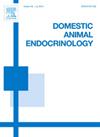Dietary oleuropein supplementation affects lipolysis in broilers
IF 2.1
2区 农林科学
Q2 AGRICULTURE, DAIRY & ANIMAL SCIENCE
引用次数: 0
Abstract
Oleuropein, a phenolic compound derived from olives, was investigated for its effects on the adipose tissue physiology of broiler chickens during the initial 10 days post-hatch. We hypothesized that oleuropein could modulate the adipose tissue of the chicken due to its known bioactive properties. Sixty-eight day-of-hatch Cobb-Hubbard broilers were randomly divided into treatment groups receiving different amounts of oleuropein (0, 125, 250, or 500 mg/kg of commercial starter diet). Diets were fed ad-lib and on day 10 post-hatch, blood and adipose tissue samples (abdominal and subcutaneous) were collected from 12 broilers in each group. Plasma was collected to measure non-esterified fatty acids (NEFA) concentrations. The mRNA levels of key regulators of adipogenesis and lipolysis were assessed by real-time PCR. At day 10, body weights were lower in the 125 and 250-dose groups. In both adipose tissue depots, lipolytic enzyme adipose triglyceride lipase (ATGL) mRNA was higher in the 125-dose group compared to other groups. Diacylglycerol O-acyltransferase 2 (DGAT2) and peroxisome proliferator-activated receptor γ (PPARγ) were lower in the 125-dose group relative to other groups. Plasma NEFAs were greater in the 125-dose group than in the other groups. This suggests that oleuropein has pro-lipolytic and anti-adipogenic properties and may provide a means to reduce excessive adipose tissue accumulation in broilers.
饲粮中添加橄榄苦苷对肉仔鸡脂肪分解有影响
橄榄苦苷是一种从橄榄中提取的酚类化合物,研究了其对肉鸡孵化后最初10天脂肪组织生理的影响。我们假设橄榄苦苷可以调节鸡的脂肪组织,由于其已知的生物活性特性。试验选用68只孵化日龄科哈伯德肉鸡,随机分为各组,分别添加0、125、250、500 mg/kg不同剂量的橄榄苦苷。在孵化后第10天,每组12只肉仔鸡采集血液和脂肪组织(腹部和皮下)样本。采集血浆测定非酯化脂肪酸(NEFA)浓度。实时荧光定量PCR检测脂肪生成和脂肪分解关键调控因子的mRNA水平。第10天,125和250剂量组的体重较低。在两个脂肪组织库中,125剂量组的脂溶酶脂肪甘油三酯脂肪酶(ATGL) mRNA均高于其他组。125剂量组二酰基甘油o -酰基转移酶2 (DGAT2)和过氧化物酶体增殖物激活受体γ (PPARγ)较其他组低。125剂量组血浆NEFAs高于其他各组。这表明橄榄苦苷具有促脂肪分解和抗脂肪生成的特性,可能提供一种减少肉仔鸡过度脂肪组织积累的方法。
本文章由计算机程序翻译,如有差异,请以英文原文为准。
求助全文
约1分钟内获得全文
求助全文
来源期刊

Domestic animal endocrinology
农林科学-奶制品与动物科学
CiteScore
5.50
自引率
4.80%
发文量
58
审稿时长
31 days
期刊介绍:
Domestic Animal Endocrinology publishes scientific papers dealing with the study of the endocrine physiology of domestic animal species. Those manuscripts utilizing other species as models for clinical or production problems associated with domestic animals are also welcome.
Topics covered include:
Classical and reproductive endocrinology-
Clinical and applied endocrinology-
Regulation of hormone secretion-
Hormone action-
Molecular biology-
Cytokines-
Growth factors
 求助内容:
求助内容: 应助结果提醒方式:
应助结果提醒方式:


